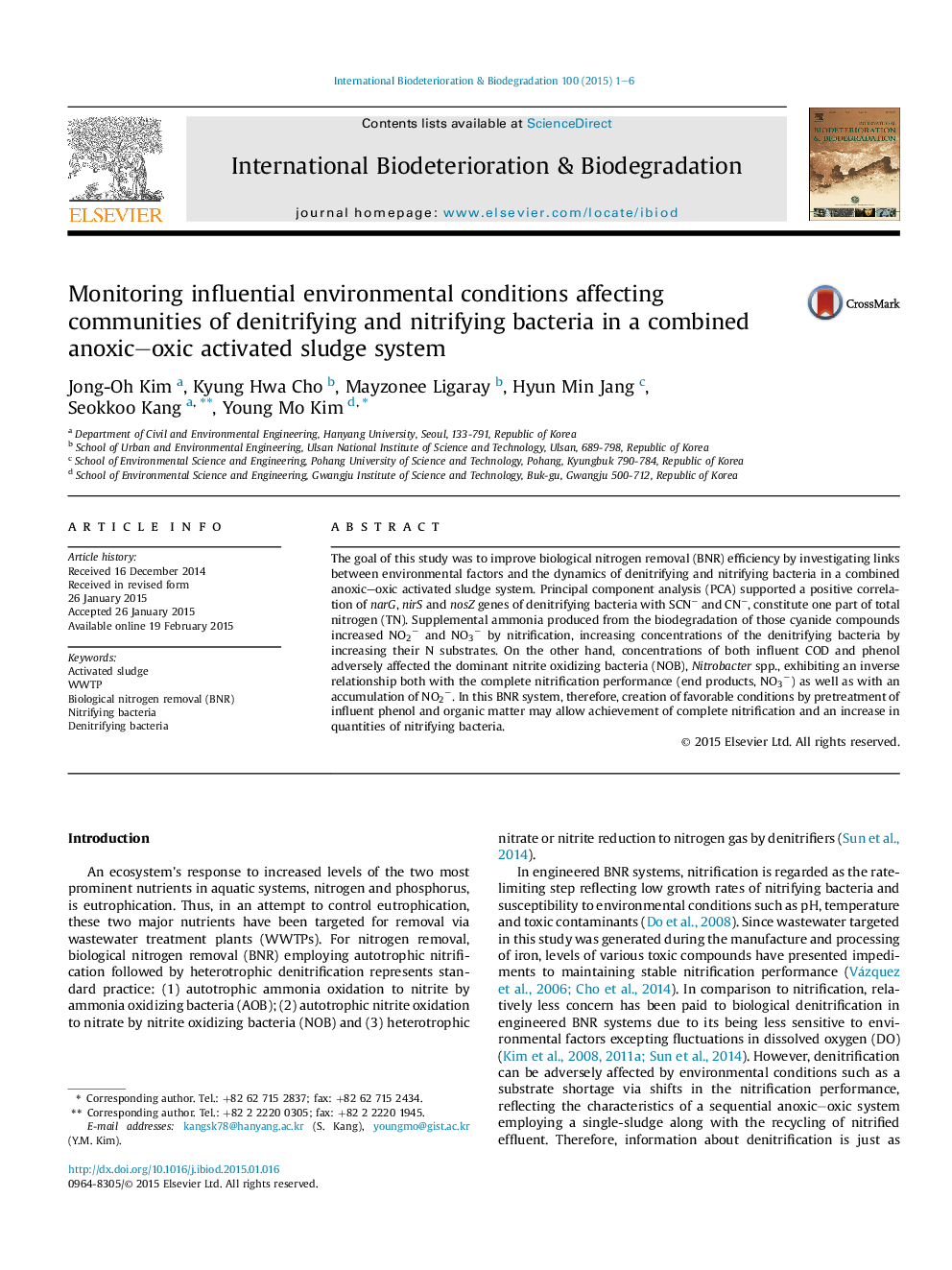| Article ID | Journal | Published Year | Pages | File Type |
|---|---|---|---|---|
| 4364428 | International Biodeterioration & Biodegradation | 2015 | 6 Pages |
Abstract
The goal of this study was to improve biological nitrogen removal (BNR) efficiency by investigating links between environmental factors and the dynamics of denitrifying and nitrifying bacteria in a combined anoxic-oxic activated sludge system. Principal component analysis (PCA) supported a positive correlation of narG, nirS and nosZ genes of denitrifying bacteria with SCNâ and CNâ, constitute one part of total nitrogen (TN). Supplemental ammonia produced from the biodegradation of those cyanide compounds increased NO2â and NO3â by nitrification, increasing concentrations of the denitrifying bacteria by increasing their N substrates. On the other hand, concentrations of both influent COD and phenol adversely affected the dominant nitrite oxidizing bacteria (NOB), Nitrobacter spp., exhibiting an inverse relationship both with the complete nitrification performance (end products, NO3â) as well as with an accumulation of NO2â. In this BNR system, therefore, creation of favorable conditions by pretreatment of influent phenol and organic matter may allow achievement of complete nitrification and an increase in quantities of nitrifying bacteria.
Keywords
Related Topics
Life Sciences
Environmental Science
Environmental Science (General)
Authors
Jong-Oh Kim, Kyung Hwa Cho, Mayzonee Ligaray, Hyun Min Jang, Seokkoo Kang, Young Mo Kim,
